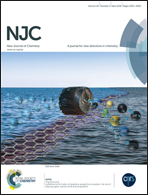Thermochemical lignin depolymerization and conversion to aromatics in subcritical methanol: effects of catalytic conditions
Abstract
Lignin is the second most abundant polymer and a renewable resource with a high energy density, but it is considered to be difficult to process because of the high reactivity of its building blocks that undergo recombination reactions leading to the formation of THF insoluble residues (char). In this study, solvolytic depolymerization was studied under three different catalytic conditions. A homogeneous catalyst NaOH, a heterogeneous catalyst HZSM-5 and the solid waste of iron turnings from lathe machining (as a consumable catalyst) were studied. We observed that HZSM-5 showed a similar lignin depolymerization efficiency to NaOH. HZSM-5 showed highest ethyl acetate extractibles with the lowest THF insoluble residue formation during lignin depolymerization and the Mw of lignin decreased from 5000 mol g−1 to <550 mol g−1. The products formed were mainly alkyl substituted phenols, which have high industrial applications. Iron turnings showed efficient reduction in the average molecular weight of products as compared to the original lignin along with adversely increased THF insoluble residue formation and a low yield of alkyl substituted phenols. In all the cases, based on the product profile obtained, the behavior of the catalytic action is explained using a schematic representation of the mechanisms.


 Please wait while we load your content...
Please wait while we load your content...